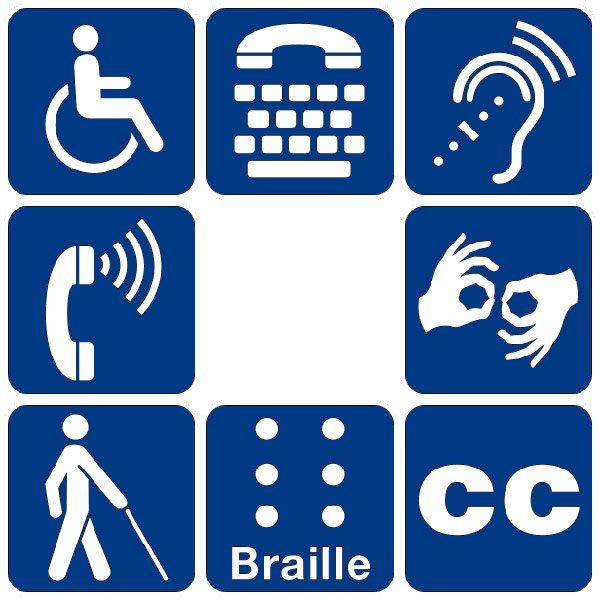
October 10, 2017; Los Angeles Times
A Kessler Foundation survey unveiled yesterday at a Capitol Hill press conference in Washington, D.C. reveals a major gulf between supervisor impressions of how well they serve the disabled community and the practices actually needed to do so.
Kessler has long been a leading funder and advocate for policies that support the integration of U.S. residents with disabilities into mainstream society. The survey, conducted in partnership with the University of New Hampshire’s Institute on Disability, asked 3,085 supervisors in organizations with 25 or more employees “about hiring, training and retention practices, and whether or not those practices were effective both for employees in general and those with disabilities.”
Holly Ramer of the Associated Press reports on the findings of the Kessler survey: “People with disabilities make up 3.2 percent of U.S. workers ages 16-64…Those 4.6 million workers amount to about 30 percent of the total working age population of people with disabilities, meaning the vast majority of people with disabilities aren’t employed.” Sadly, this 70 percent unemployed figure is unchanged from when the Americans with Disabilities Act (ADA) was passed by Congress into law in 1990.
Ramer’s article highlights the gap between positive business intent and, alas, all-too-frequent failure to follow through in action. For example, Ramer writes that, “Most employers have effective programs for accommodating workers with disabilities, but they often overlook recruiting and training practices that could expand employment opportunities.” Ramer also reports that two-thirds of respondents “said their organizations have policies and procedures to provide requested accommodations to workers with disabilities, and nearly all of them rated those processes as effective,” yet only 13 percent of supervisors said their organizations offer job sharing, even though “90 percent of those who allow it said such policies were effective for both people with disabilities and workers overall.”
Another example of the same gap between stated ends and actual means is that, “While two-thirds of those surveyed said it is very important to provide requested accommodations to workers with disabilities, only 28 percent of organizations have disability hiring goals, compared to nearly 60 percent that have goals for other types of diversity.”
Nonprofit Quarterly has covered the work of the Kessler Foundation before, as well as engaging in broader analysis of the role foundations play in supporting more empowering employment for U.S. residents with disabilities. We have also highlighted the challenges this group faces in obtaining quality jobs, as well as federal grant funding that is available for those investing in improvements. We have also called out programs that continue to use the “sheltered workshop” provision in federal labor law that still allows employers to hire disabled Americans—but at a fraction of the minimum wage.
Sign up for our free newsletters
Subscribe to NPQ's newsletters to have our top stories delivered directly to your inbox.
By signing up, you agree to our privacy policy and terms of use, and to receive messages from NPQ and our partners.
A little less than three years ago, in one of our newswires, Rick Cohen pointed out that former Senator Tom Harkin (D-IA), an author of the ADA, raised the issue of unemployment among the disabled in his final speech from the Senate floor. Harkin said:
How many of us know that the unemployment rate among adult Americans with disabilities who want to work and can work is over 60 percent?! Yes, you heard me right: almost two out of three people with disabilities cannot find a job. That is a blot on our national character.
John O’Neill, director of Disability and Employment Research at the Kessler Foundation and the study’s co-investigator, emphasized that by partnering with groups that work with the disabled community businesses can change these numbers: “Many times, employers don’t know where to go to find qualified candidates. That’s a practice that’s really underutilized, but when it is utilized it’s considered to be very effective.”
Economist Andrew Houtenville, who is research director for the New Hampshire center, says that positive change is possible. As Houtenville explains,
For example, while most organizations have effective processes for recruiting and supporting new hires, these processes are not as effective for candidates with disabilities. We need to look into how these processes can be improved … certain practices are seen as highly effective for employees with disabilities, but are underutilized by employers. The most striking example is a centralized accommodation fund, found to be 97 percent effective, but maintained by only 16 percent of employers.
[Editor’s Note: An example of such a fund in the state of Minnesota can be seen here.]
Kessler Foundation president Rodger DeRose says that disability remains “the silent minority.” He adds, “This whole area of employing people with disabilities has been real struggle before signing of the Americans with Disabilities Act in 1990, and here we are 27 years later, and it’s still a challenge.”—Steve Dubb











